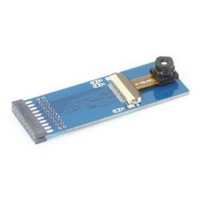



The Mega 2560 has a resettable polyfuse that protects your computer's USB ports from shorts and overcurrent. See this user-contributed tutorial for more information. Or you can use the ISP header with an external programmer (overwriting the DFU bootloader). You can then use Atmel's FLIP software (Windows) or the DFU programmer (Mac OS X and Linux) to load a new firmware. On Rev2 or later boards: there is a resistor that pulling the 8U2/16U2 HWB line to ground, making it easier to put into DFU mode.On Rev1 boards: connecting the solder jumper on the back of the board (near the map of Italy) and then resetting the 8U2.The ATmega16U2/8U2 is loaded with a DFU bootloader, which can be activated by: The ATmega16U2 (or 8U2 in the rev1 and rev2 boards) firmware source code is available in the Arduino repository. You can also bypass the bootloader and program the microcontroller through the ICSP (In-Circuit Serial Programming) header using Arduino ISP or similar see these instructions for details. It communicates using the original STK500 protocol ( reference, C header files). The ATmega2560 on the Mega 2560 comes preprogrammed with a bootloader that allows you to upload new code to it without the use of an external hardware programmer. For details, see the reference and tutorials. The Mega 2560 board can be programmed with the Arduino Software (IDE). You can find here your board warranty information. Need any help with your board please get in touch with the official Arduino User Support as explained in our Contact Us page. Need Help?Ĭheck the Arduino Forum for questions about the Arduino Language, or how to make your own Projects with Arduino. You can find in the Getting Started with Arduino MEGA2560 Rev 3 section all the information you need to configure your board, use the Arduino Software (IDE), and start tinkering with coding and electronics.įrom the Tutorials section you can find examples from libraries and built-in sketches as well other useful information to expand your knowledge of the Arduino hardware and software. If you are looking at upgrading from previous Arduino designs, or if you are just interested in boards with similar functionality, at Arduino you can find:įind inspiration for your projects with the Mega 2560 board from our tutorial platform Project Hub. The Mega 2560 is an update to the Arduino Mega, which it replaces. The Mega 2560 board is compatible with most shields designed for the Uno and the former boards Duemilanove or Diecimila. It contains everything needed to support the microcontroller simply connect it to a computer with a USB cable or power it with a AC-to-DC adapter or battery to get started. It has 54 digital input/output pins (of which 15 can be used as PWM outputs), 16 analog inputs, 4 UARTs (hardware serial ports), a 16 MHz crystal oscillator, a USB connection, a power jack, an ICSP header, and a reset button. The Arduino Mega 2560 is a microcontroller board based on the ATmega2560.


 0 kommentar(er)
0 kommentar(er)
